Perugia is the capital city of Umbria, built on a hilltop typical of such settlements in the region allowing for a 360° vision of any potential invaders.
Crossed by the river Tiber it dates back to the Etruscan period and for many centuries it maintained independent status, never accepting papal nor imperial sovereignty. In 1540, following the Salt Wars, Perugia lost its independence and was annexed to the papal states. Salt was probably one of the first traded commodities and it was crucial during this period for its use in preserving food, in particular preventing the spoilage of meat and fish. It also had medicinal qualities for treating wounds, purifying water and treating certain ailments. As a result of its independence, one of Perugia’s privileges had included not paying taxes on salt but following a disastrous harvest, Pope Paul III decided to levy a salt tax on the people of Perugia, violating earlier treaties. The Perugians rebelled but on 4th June 1540 papal troops led by the Pope’s illegitimate son Pier Luigi Farnese, forced a surrender. Pope Paul III had a fortress built to contain the city and its people, constructing the building over the existing Etruscan walls, streets and archways creating a unique underground city, a catacomb of businesses and dwellings.
The Rocco Paolina, a maze of undergound streets
Perugia is our destination on the third day of our Tuscan writers’ retreat. As we approach we can see the old city high up on the hillside, but we leave the minibus in a large functional car park below, servicing what feels like an abandoned modern shopping centre, eerily devoid of life. We step from the bus, avoiding the ubiquitous discarded litter of a McDonalds meal. From here we take a mini metro up the steep incline into the old town. Strange little vehicles, hardly bigger than cable car cabs running up and down on tracks. I opt to stand rather than take one of the limited seats but at the second stop a man gets on and stands directly in front of me, blocking me in. He then reaches up to hold the strap and I am confronted by his armpit merely inches from my nose. The odour hits me, a combination of the musty smell of dried sweat with unwashed clothes but there is no escape. All the way to the top I try unsuccessfully not to breath through my nose. My relief on exiting the metro is palpable and I draw a long slow breath of fresh air. I don’t even mind that it is starting to rain.
You could be forgiven for thinking that the littered car park together with armpit man might be taking the gloss off my love affair with Italy but as we wander up yet another ancient, cobbled street and through an arched entrance to the underground maze of streets and rooms I am as enamoured as ever. The Rocco Paolina is an underground vault of walkways and terraces, eerie and atmospheric and it was easy to imagine them busy and crowded with the hustle and bustle of life in the Middle Ages, with people living and working in this underground city.
The entrance to the Rocco Paolina
We emerged into wide open streets, lined with old buildings yet home to many modern retail outlets, aimed I imagine at wealthy tourists. My first stop was not to look at Gucci bags but to find a Pharmacy to see if I could get some ointment for my throbbing eye. Despite attempts at learning Italian over the past few years, originally with classes and latterly with Duolingo, I’m not very confident however I boldly approached the counter and spoke to the pharmacist
“Buongiorno! Voglio qualcosa per il mio occhio per favore” (Good morning, I would like something for my eye please)
Imagine my thrill and surprise when on inspecting my eye he replied in Italian
“Quando è iniziato?” (When did it start?)
Despite understanding perfectly what he was asking me, I was so taken aback that he assumed we could converse in Italian that my mind immediately went blank and instead of telling him “Durante la notte” (During the night) I panicked and stuck up one finger and blurted “Un giorno”. (One day)
He disappeared into the back of the shop and came back with ointment which he explained how to use in perfect English. He obviously recognised the limit of my Italian conversation, but nevertheless I was still delighted that I had managed that much, given that most of the conversion in Duolingo seems to centre around penguins. Funnily enough, not a creature I have ever encountered or needed to discuss on my travels in Italy.
We continued along the street towards the city square to the Duomo, the Cattedrale di San Lorenzo where Emily and I left the others to have a quick look inside, impressed by the sheer size, and not disappointed with the lavish frescos and luminous stained glass within. We were also in search of the Etruscan well, walking past the entrance several times before finding it. We paid our 4 Euro entrance fee and watched the short introductory video before descending the steps to the viewing platform, a glass footbridge that spans the diameter of the well several metres underground.
Looking into the depths of the Pozzo Etrusco
This impressive example of ancient hydraulic engineering dates back to the 3rd century when it was built by the Etruscans and was an important source of water for the town. The massive structure extends 37 m below ground and is 5.6 m in diameter at its widest point and it continued to supply water throughout the ancient and medieval periods. Today it is still fed by three veins of water which was evident as we ventured down through the humid atmosphere where water was running down the walls and dripping on us from above and we could see the water in the well below. Fascinating as all this ancient history was, our stomachs were calling so we came back out into the daylight to meet up with some of the others for lunch. I ordered Panzanella, a Tuscan bread salad that I have often made at home, but which never tastes quite as good as this one did, eaten outside at a pavement café.
After lunch there was more aimless wandering, soaking up the atmosphere and people watching before we decided we needed to sample a Perugian speciality, hot chocolate. Hot chocolate, or cioccolata calda is made throughout Italy but Perugia is especially famous for its chocolate and is known as the Italian commercial centre of chocolate. In 1907 four men founded the Perugin company which specialised in sugared almonds. But when war broke out, Luisa Spagnoli, wife of one of the four men took over the running of the company, unusual for a woman at that time, but she proved to be a forward thinking and astute business woman and helped establish the chocolate making industry in the town. She was responsible for developing Baci Perugina, the famous chocolate truffles that are sold worldwide, Baci literally meaning ‘kisses’
Back to that hot chocolate and it was easy to see how it had gained its reputation. It was like liquid cocoa, so thick you could almost stand a spoon up in it and it tasted every bit as good as it looked, rich, dark, smooth and velvety, not too milky, not too sweet but an intense chocolate taste experience. What a wonderful way to finish our day in Perugia.
One the way back to the minibus I popped into a small shop selling all sorts of weird and wonderful things and bought a packet of San Marzano tomato seeds; too late for planting this year but I’ll keep them for growing on the allotment next year and hopefully I can look forward to lot of rich tomato sauces that remind me of Italian summers. We got back to Il Maggese in time for an hour of writing aperitivo before dinner. A chance to capture our thoughts about yet another wonderful day, helped along with an Aperol Spritz. I’ve already forgotten what we had for dinner, but you can guarantee it was good.
Writing Aperitivo - me deep in thought as I research the history of Perugia
Next week I will be back with the final instalment of my Italian adventure which I do hope you have enjoyed reading so far (you can click on the heart below to let me know or even leave me a comment) because I have loved writing about it, recalling some of the details and it has prompted lots of ideas of how I might take my writing further, mostly involving food and travel, with some art and creativity thrown in for good measure. See you next week… cheers!


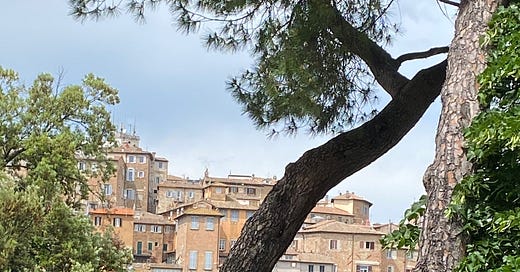



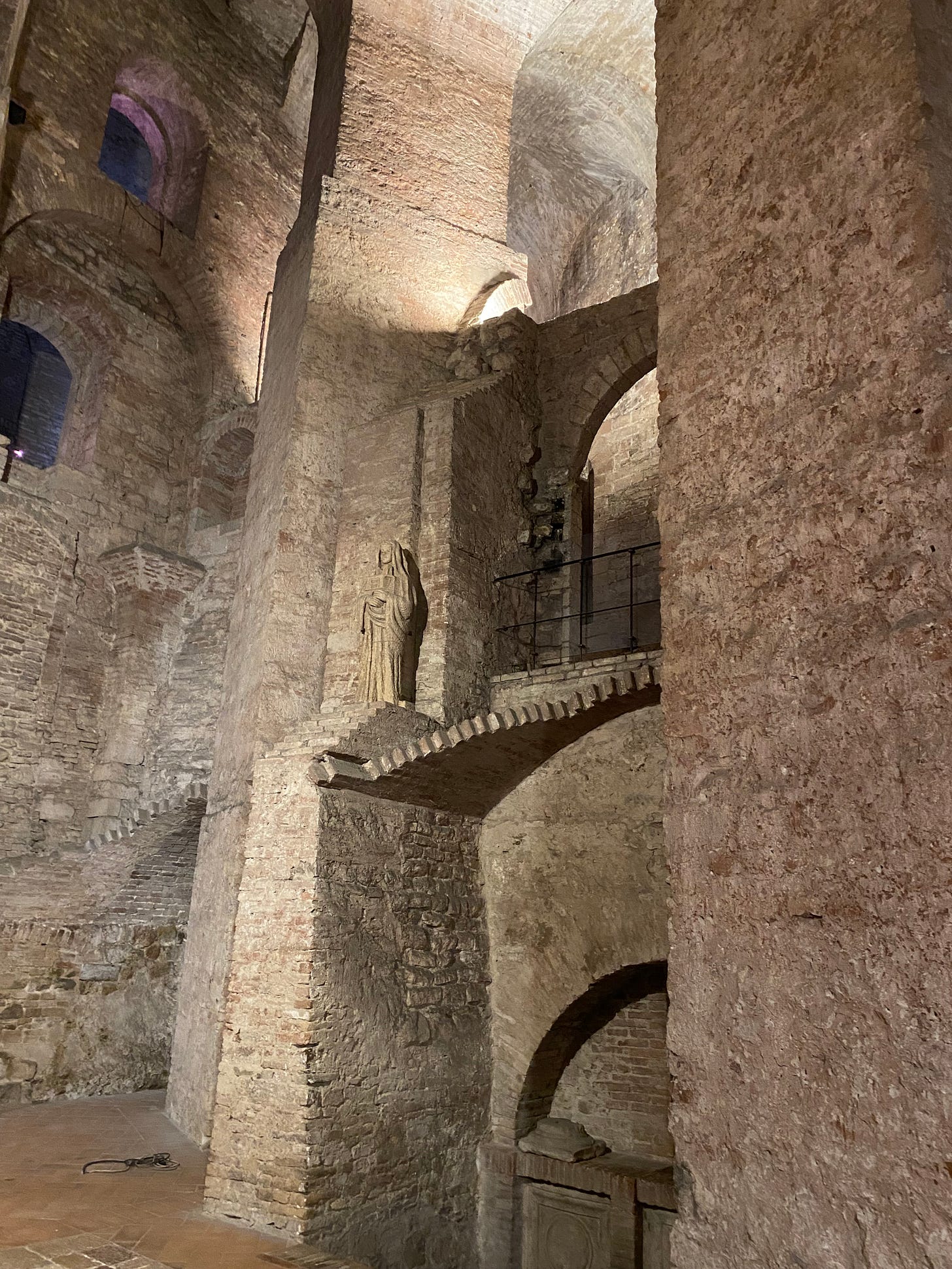

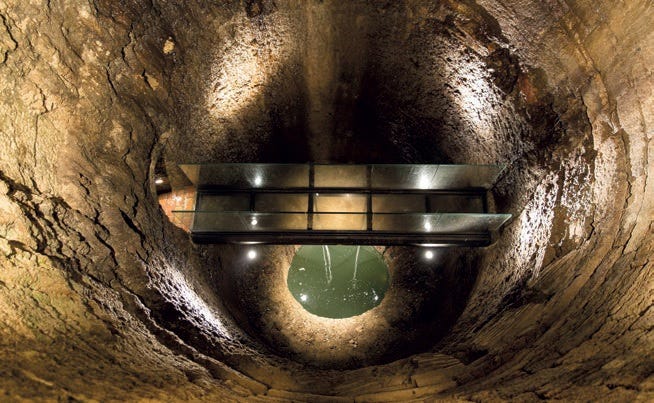
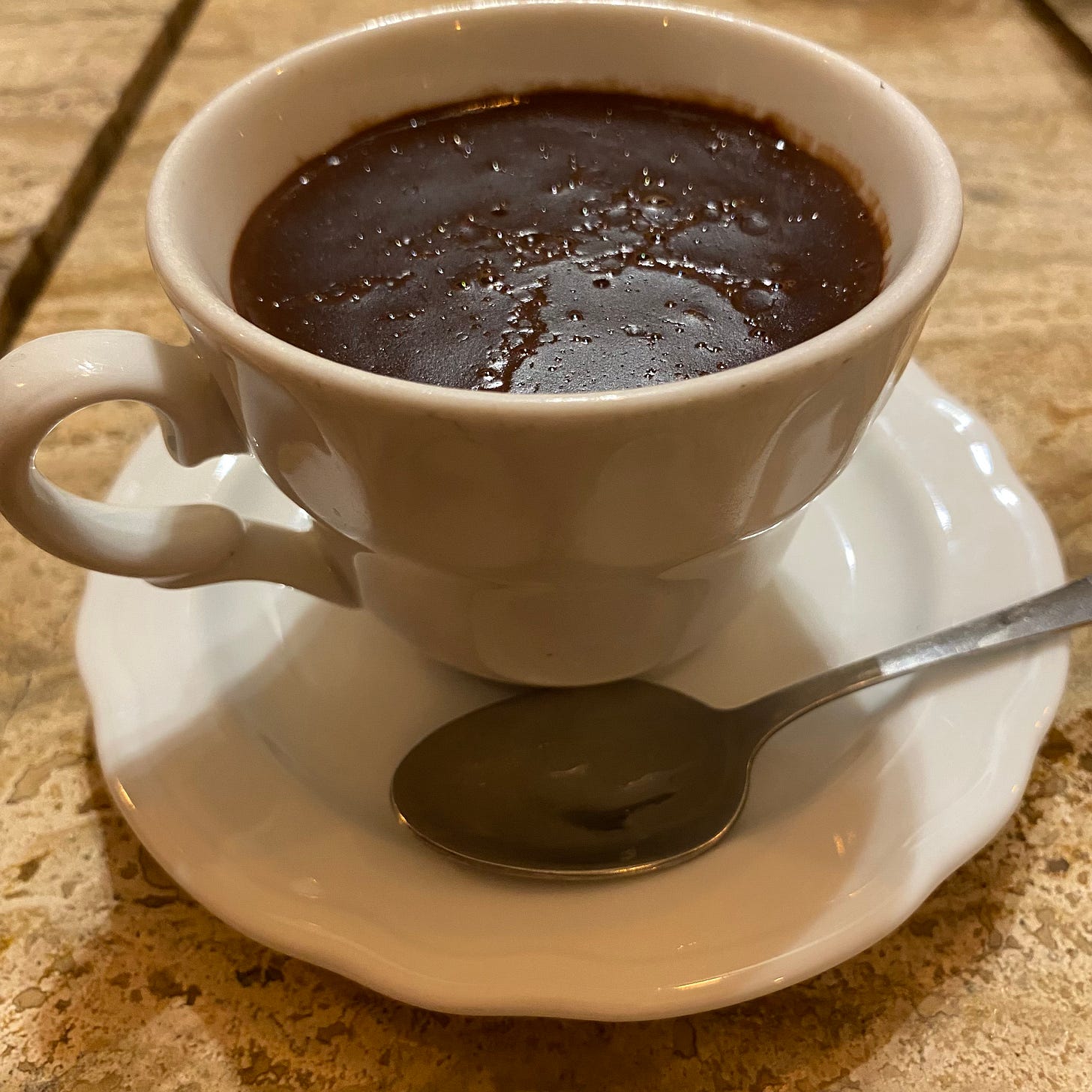

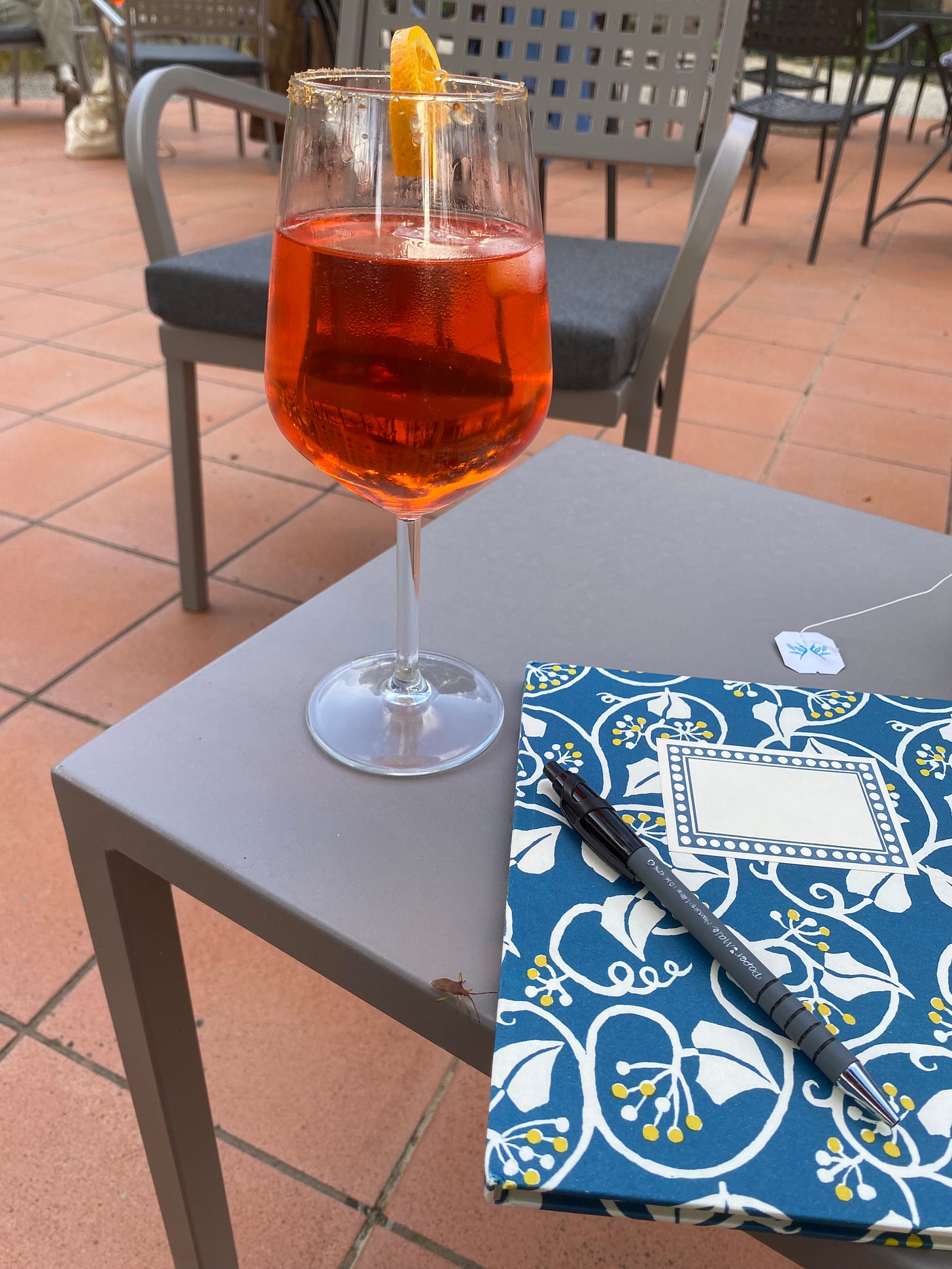
I have loved reading about your Italian experience and look forward to the next part. It's great that this trip has encouraged you to explore writing more, you are already very good at it. Thanks for sharing so much with us.
Such beautiful writing Gina, you have a gift x